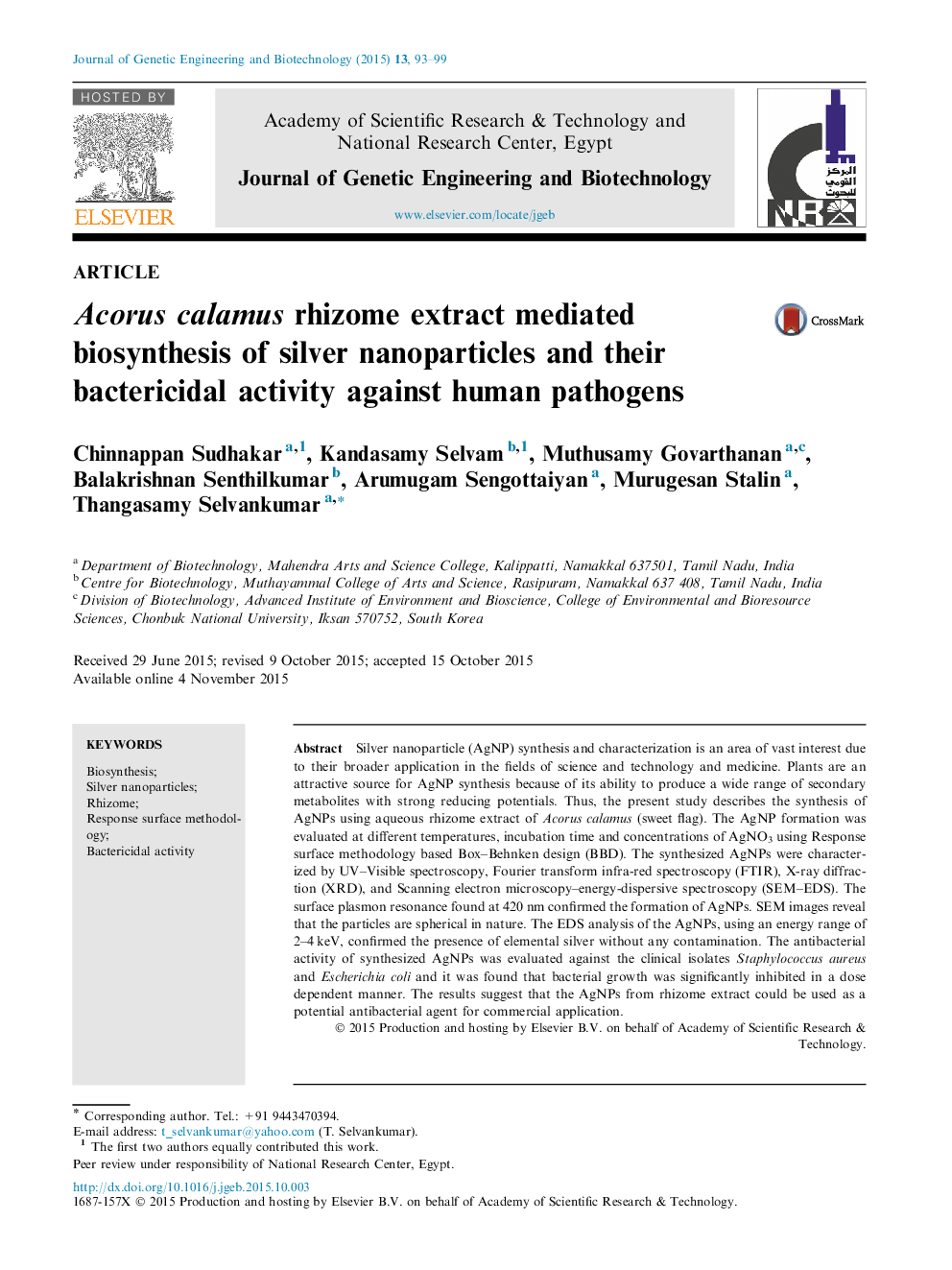| Article ID | Journal | Published Year | Pages | File Type |
|---|---|---|---|---|
| 2087857 | Journal of Genetic Engineering and Biotechnology | 2015 | 7 Pages |
Silver nanoparticle (AgNP) synthesis and characterization is an area of vast interest due to their broader application in the fields of science and technology and medicine. Plants are an attractive source for AgNP synthesis because of its ability to produce a wide range of secondary metabolites with strong reducing potentials. Thus, the present study describes the synthesis of AgNPs using aqueous rhizome extract of Acorus calamus (sweet flag). The AgNP formation was evaluated at different temperatures, incubation time and concentrations of AgNO3 using Response surface methodology based Box–Behnken design (BBD). The synthesized AgNPs were characterized by UV–Visible spectroscopy, Fourier transform infra-red spectroscopy (FTIR), X-ray diffraction (XRD), and Scanning electron microscopy–energy-dispersive spectroscopy (SEM–EDS). The surface plasmon resonance found at 420 nm confirmed the formation of AgNPs. SEM images reveal that the particles are spherical in nature. The EDS analysis of the AgNPs, using an energy range of 2–4 keV, confirmed the presence of elemental silver without any contamination. The antibacterial activity of synthesized AgNPs was evaluated against the clinical isolates Staphylococcus aureus and Escherichia coli and it was found that bacterial growth was significantly inhibited in a dose dependent manner. The results suggest that the AgNPs from rhizome extract could be used as a potential antibacterial agent for commercial application.
